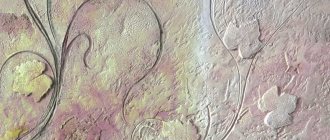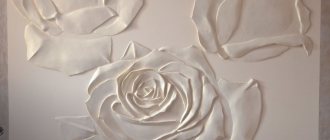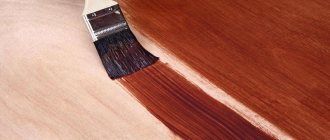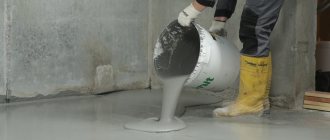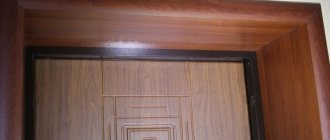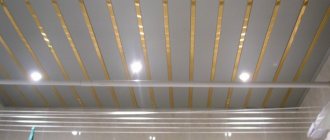What are modular paintings?
For a long time now, beautiful canvases have replaced soviet carpets. This is a modern way to quickly and inexpensively decorate any room, be it a discreet office or a cozy bedroom. The main difference between segment paintings and ordinary ones is that they are divided into several elements that visually merge into a single whole.
The range of sizes will allow you to fit beautiful decor into a room of any size. In addition, the component elements can be shifted relative to each other vertically or horizontally, positioned symmetrically or chaotically.
Interesting! A special group consists of works on a glass base, but their creation requires special paints and printers.
How to do it yourself
The material that can be taken as an image can be selected depending on the availability of finances and wishes.
Options for canvas with images:
The choice of frame depends on the chosen base. A master class on making such paintings will help you create an interior masterpiece.
Types of modular canvases
Depending on how many separate particles the canvas consists of, the following types are distinguished:
- diptychs are an option consisting of 2 segments that fit perfectly even into the interior of a small room;
- triptychs - contain 3 segments, which are most common among users, and from this they began to be considered classics of the genre;
- penaptychs - consisting of 4 pieces, freely located on the wall;
- polyptych - from five or more elements of a single canvas.
Remember! To decorate small rooms, you should not use compositions from many segments, so as not to overload the area.
In order to decorate a room, you don’t have to adhere to strict rules. With the capabilities of today's printing, you don't have to be a professional artist to create modular paintings at home. Isn't this a challenge for a truly creative person?
Sequence of work
The cut out fragments are placed on the surface of the subframe and fixed with temporary fasteners at several points (pins or thin nails). Then the workpiece should be turned over, allowances should be placed on the wrong side and sequentially attached to the stretcher. You should start with the long sides, then move to the short ones. Lastly, fold and secure the corners.
It is necessary to avoid excessive tension of the canvas, as this will lead to deformation of the pattern. If desired, the ends can be treated with tape, and decorative elements can be attached to the front surface of the painting.
Lastly, the hinges are nailed from the inside out and then the pictures are hung on the wall.
How to choose canvases for different rooms
Before you learn how to create modular canvases with your own hands, you need to figure out for which room a particular model of canvas is suitable.
- Bedroom. To decorate the walls of this cozy and secluded place, you should remember that this is a room for privacy and relaxation. That is why you should not choose aggressive or sharp lines or bright colors in your images. For the bedroom, a muted, calm landscape or a beautiful abstract image is most suitable, which must be in harmony with the rest of the decoration of the rest room, since a sharp resonance will attract all attention only to the wall element of the interior.
- The living room is a place for the whole family to relax together, therefore it is a testing ground for bold experiments and combinations of light or bright colors. The dimensions of the canvas should correspond to the dimensions of the room. Huge wall compositions will look awkward in a small living room, and small images will simply get lost in a large space.
- In the design of children's rooms, bright, rich colors are often used, and their number can be very numerous. If the decor has already used a wide palette, then it is better not to choose active tones for additional decor. Few children will appreciate abstraction, so it is better to pay attention to images of animals, cartoon characters and fairy tales.
- If a teenager’s personal space is being designed, it is better to involve him in the design choice. It is better to find out in advance what kind of decoration the teenager wants to see in his room. You can invite an older child to use photos of his friends, favorite musicians or actors for a collage.
- For the hallway, choose simple canvases. This is explained by the fact that guests and residents do not stay in this room for a long time, so it is not worth spending a lot of effort and money on decoration. At the same time, it is worth remembering that the hallway is the beginning of the house, so the image should set the tone for the overall impression of the home.
- Before you start making a decorative element for the kitchen, you need to find a place for it where it will not subsequently get dirty. If the footage of the walls allows, then it is better to choose a still life or any other “tasty” motifs of wall paintings.
How to Draw: Steps to Creation
Before you start drawing, you must clearly imagine what kind of result you want to see. To do this, experts have created several steps that will help you organize your work correctly.
So:
- Decide on the number of segments. Before drawing, the artist decides on the number of modules. This is done based on the dimensions of the wall. Most often, several blocks are used, the most optimal is 3-4 parts.
- Creating markup. As a rule, they prefer to create a modular composition from acrylic or oil. Before starting work, the canvases need to be marked with the drawing that will later be depicted.
- Placement of the painting. Not every artist thinks about where exactly his painting will be installed, although this detail is very important. Since such a composition is an interior item, you need to take care in advance of its color design, which will fit perfectly into the decor. For example, in a hospital, it is better to use sky blue or beige; in universities - orange, red, yellow; in a residential area, all warm shades.
It should be added that paintings are painted not only with acrylic or oil; sometimes they are created using special fabric printers, onto which ready-made images are applied. If the technical support is good, then it will be very difficult to notice that the picture was created artificially.
Many designers create their modular paintings in this way, and only complement the finished version with paints.
It would be appropriate to say that a painting made with your own hands is not inferior to other models. There is an opinion that paintings painted with paints have long been replaced by photographs, and this is partly true. However, we should not forget that painting is a magnificent art that will live for many years, and it is unlikely that any photography will replace them.
The process of making modular paintings with your own hands
When you have decided on the future location of your work, you need to choose a topic. We do not recommend choosing a portrait, since a face divided into parts does not look entirely appropriate.
You can simply download any high-resolution image you like from the Internet and print it on fabric, paper or canvas.
Modular paintings from photo wallpapers
This master class is not a topic for your attention: a modular picture from photo wallpaper. To work you will need:
- printed drawing;
- wooden blocks or 2-centimeter foam panels;
- furniture stapler or glue gun.
Segmental wallpaper canvases require special preparation of the image chosen for implementation in the interior. Many photo salons can offer you already selected catalogs of options for review. You can also use a downloaded image or even draw your own personal pattern. It will be competently divided into parts in a graphic editor and printed on the required material. If desired, beautiful photo wallpapers can be purchased at any hardware store.
Next follow these instructions:
- The first thing to make is a frame for a modular picture or a foam base. Take wooden blocks with a section of 2 x 2 cm, and build as many frame frames as you want to create a canvas from. Or cut sheets of appropriate sizes from foam plastic. Remember that the dimensions of the foam base should be slightly smaller than the area of the wallpaper pieces, since the pattern will also have to fall on the side of the segment.
- Cut out the images, leaving small allowances on the sides and a small fold on the wrong side of the frame.
- Place all cut-out elements from the wallpaper face down, and place appropriate wooden frames or a foam base on top.
- Secure the pieces of photo wallpaper using a hot glue gun, first bending the edges to the wrong side of the wooden frame. For a foam base, hot glue may not be suitable, as it can melt the material, so it is better to use special glue or a furniture stapler. It is important that it is better not to fix only those parts of the picture that are on the wrong side when wrapping, otherwise the entire surface of the photo will wrinkle.
Interesting! In the same way, you can create modular paintings from photographs by printing them on photo paper of the appropriate size.
Production of modular fabric panels
Another material that is usually used for handmade creativity is fabric. For this type of decor, you can use a variety of bright shreds, of which there are many in any home.
The main advantage of this method is that you don’t have to try to match the edges of the modules. In this regard, work will be much easier and more fun.
The step-by-step instructions are as follows:
- First, you need to decide on the future number of modules and their size. For fabric material, it is better to prepare wooden frames rather than polystyrene foam.
- Cut the cloth according to the size of the modules, not forgetting about 5-6 cm for the next bend.
- Attach frames to the reverse side of the finished cut elements.
- Using needles or pins, temporarily secure the fabric to the frame.
- Turn over and check the correct placement of the fabric, sequentially secure the allowances to the frame using a construction stapler. It is better to start with the long sides, gradually moving to the short ones. At the very end, the corners are fixed.
- The wrong side can be covered with a stretcher made from a piece of chipboard or plywood.
It is difficult to overestimate the importance of decorative elements in a modern interior. Choose images that will complement and emphasize the style of the room, adding comfort and creativity to it. Do you have experience creating segment paintings? Share your secrets in the comments.
Master class made of fabric
Materials:
- fabric with a plot or ornament, a printed image or wallpaper with a photo design;
- base: wooden slats 50x20 and plywood, fiberboard or polystyrene foam;
- PVA glue;
- scissors;
- pencil, chalk or soap;
- centimeter;
- stapler for furniture.
Step 1. Preparing the base
Depending on your budget, you can buy a ready-made canvas base or make one yourself. The first option is suitable for those who are inspired to paint a picture. For the first experiment, it is better to make a triptych - three elements, for which we prepare three bases. From slats and pieces of plywood you can quickly build a base for a modular picture. To do this, we connect wooden slats into a frame, cutting off the ends at an angle of 45 degrees. They can be stapled or glued.
For strength, we attach plywood triangles (with 10 cm legs) to the corners of the frame from the wrong side. As a lining, you can stretch a neutral-colored fabric over the frame, securing it with a stapler.
It is much easier to use pieces of fiberboard as a base; you just need to process the base along the edges. If you choose the option of wallpaper or a printed image, then you can choose a very simple and light base - polystyrene foam.
Step 2. Attach the canvas to the base
Before cutting out segments, plan well and mark the cut locations using the “measure twice and cut once” principle. The size of the fabric should take into account the folds on the reverse side. We fix the fabric on the stretcher with a furniture stapler, attaching the staples from the wrong side of the work. It is important to stretch the fabric evenly without forming folds. We fasten the long side first, and then the short one.
Printed versions can even be glued to thin foam ceiling tiles using PVA glue.
Many people, instead of wallpaper with a photo, order a print of the picture they like from numerous printing services. You don't need to be a master to do this, however, when printing you need to think about making several separate elements with overlapping designs. This way you maintain the integrity of the overall picture.
Related article: Creating a unique collage from photographs: design options
Step 3. Place the paintings
At this stage, you need to figure out a place where you will hang your composition, as well as a way to position the canvases relative to each other. For mounting, you can choose ordinary small-format furniture hangers. If the paintings are mounted on stretchers, then they can be fixed with screws that are screwed into dowels and protrude slightly from the wall.
Extremely interesting are the arrangement options, where one canvas is offset in an interesting way. An element that is deliberately shifted in “flight” as if by a blow of wind looks unique.
The master class will give you an understanding of the main points of creating a modular painting. You can safely experiment with the materials of the canvas itself and the base, choosing what you have available. For the first tests, even pieces of drywall or foam plastic, on which pictures from a printer or rectangles from wallpaper are pasted, will do. When you practice using simple materials, you will be able to make more complex compositions for interior decoration.
Video gallery
Photo gallery
Paintings in the living room interior
When choosing a photograph for a living room, you should consider not only its size and shape, but also pay special attention to the content of the canvas. Unlike the bedroom or kindergarten, the living room is the face of your apartment. Considering this fact, the picture in the picture should appeal to all family members. In the case of a huge number of scenes and colors, a compromise can be found on this issue
Unlike the bedroom or kindergarten, the living room is the face of your apartment. Considering this fact, the picture in the picture should appeal to all family members. In the case of a huge number of scenes and colors, a compromise can be found on this issue.
Cityscape
Match the story to your character (but keep in mind the overall style of the room). Calm and balanced people will be pleased to see photographs of streets with ancient architecture. They immerse the viewer in a cozy and calm atmosphere of a leisurely life. Young and active people who prefer life on the move will benefit from dynamic images of skyscrapers and modern cities.
Popular articles How to crochet booties
The image of ancient architecture allows the viewer to feel the calm and measured rhythm of life of those times.
Floral motifs
Flowers are one of the traditional scenes for modular paintings. Shared with a common theme, these images can be completely different in style and color. Leave your choice on the flower image that carries the desired meaning. For example, exquisite orchids symbolize harmony in the family, and lotus symbolizes health and happiness.
Flowers in the living room interior are one of the classic solutions.
Nature and landscapes
Living in a city very rarely gives us the opportunity to admire inaccessible rocks or wonderful sunsets. Paintings with a similar theme bring a piece of nature, natural beauty and harmony into the home.
Abstraction and geometry
A modern interior requires the right details. You may notice different people; the same picture of this topic can evoke completely opposite emotions and associations. They are not as simple as natural motifs, but so beautiful. They want to be thought about and fantasized about what the author was trying to tell us.
Abstraction goes well with the interior of the living room.
Paper paintings
There is an easier way to make a three-dimensional image. For this you will need colored paper or cardboard. Cut out several figures of the same or different sizes from it. These could be, for example, butterflies.
Using pins or double-sided tape, attach them to the wall in a chaotic manner or forming some kind of pattern. Your paper painting will look more impressive if you choose a color that contrasts with the tone of the wall itself.
The butterflies themselves can also be of different colors. Such a picture will sparkle with new colors when artificial lighting is turned on, so it will look most advantageous in rooms where the light is turned on most often, for example, in the corridor.
If your house has a staircase to the second floor, then kittens in different poses placed on the wall adjacent to the steps will look original.
Painting of three modules for the bedroom
A triptych in calm, gentle colors is suitable for the bedroom, which can depict:
- dim, peaceful landscapes;
- family photos;
- photographs of animals;
- garden and wild flowers;
- views of night cities;
- mythological stories.
When choosing a painting for the bedroom, it is advisable to avoid disturbing, depressive subjects in dark colors - gloomy buildings, ruins, raging seas, bloody battles, fading flowers, dull landscapes, angry Hellenic gods.
Paintings full of fun and movement in a bright color palette also do not contribute to creating an atmosphere of rest and relaxation. It’s better to stop at photos of calm water surfaces, alpine meadows in the rays of sunset, and flower arrangements.
How to place a modular image in a room
The family gathers in the living room, friends and relatives come, this is a room where you can sit alone. In any case, in such a room I want to create special comfort. And organize its details, bright accents, the best of which are images.
Modularity, consisting of several fragments, is especially popular. They can consist of two to five parts. And they have different sizes. All parts of a painting can share the same story, creating a beautiful composition. Or maybe all different modules: more and less.
There is plenty of space in the living room, so you may prefer large images when choosing. According to the designers, there are 3 or 4 parts, the optimal number for such rooms to place modules on the sofa. This will allow you to display the chart at a larger scale without looking tedious.
The location of the fragments was initially determined by the manufacturer. Horizontal modules are standard option. Some designs may form a square. Very often, designers vary width and narrow images. Such configurations create an original style in the interior.
Read more about decorative paintings
Decorative paintings usually consist of 2-3 or more canvases, and if you combine them, you get a full-fledged image. They are usually arranged like this:
Interesting information: modular paintings of two or more canvases visually increase the area of the apartment. Owners of smart apartments can take note.
These images even received certain names, which depend on the number of paintings. For example:
In this direction of decor, you can experiment without boundaries and create canvases in any design.
Types of paintings
Before you make decorative paintings with your own hands, you need to understand what types there are and what material can be used. Let's begin! What can the canvas be made from:
It became popular to paint canvases yourself, decorate them with different decor and give the picture volume. Handmade lovers are experimenting with modular paintings and placing objects along different trajectories: square, round or arbitrary.
Tip: if you are good at Photoshop, you can process each image in advance, including the canvas size. Also in the program you can estimate how the finished modules will look together.
Useful features in the interior
Of course, every element in the interior has its own purpose. And even if its status is decorative, this in no way cancels the practical functions assigned to it. Modular paintings are no exception in this regard - they also have both main and secondary functions that directly or indirectly influence the formation of a healthy and harmonious atmosphere in the room.
- stylish wall decor
- very often one of the walls in the room openly spoils the impression of the entire design concept with its annoying emptiness, the use of modular paintings helps to elegantly close this sore point (original DIY wall decor); - increasing the height and volume of the room
- by introducing such decorative attributes into the interior, you can achieve the desired visual effect, mainly due to the size and type of segments; - revitalization of the color mood
- often the colors used in the mix do not produce exactly the effect that the owners were counting on, and graphic images without any hint of conflict help change the tonal balance of the room for the better; - zoning of the room
- a picture placed in a particular area helps to logically highlight it.
However, perhaps the main function that such paintings perform is still expanding the expressiveness of the interior. It is no coincidence that almost all the rooms in which they are used are distinguished by the thoughtfulness of the smallest details, catch the eye and remain in the memory for a long time. Check it out - this is really true.
Choosing a photo for the kitchen
In the kitchen, life is always preparing - something is being fried, boiled, boiled or washed.
With such activities, you should first think about the security of the image. It should not contain drops of water, steam or oil from the pan. Choose a place where it will be visible, but external factors will not negatively affect it. The most popular kitchen motif, of course, is the image of food. You can choose a photo using coffee beans, citrus fruits or sweets.
The image of citrus fruits increases appetite
However, if you do not want to use the traditional technique, feel free to choose a photo to your liking.
As already mentioned, modular images have no restrictions on the number and size of segments.
The location of the segments can also be very varied. It is not necessary to consider each in detail separately. It is enough to have a general idea of what configurations can be. Some placement options are shown in the following pictures.
There can be a lot of options for placing a segment. Choose the one that suits you best
Ratio of photo size to plane
In order for the image to look harmonious in the interior, certain proportions must be observed.
- If the photo is located above a bed, sofa or table, its width should not exceed their width (and it is better that there be 15-30 cm less on each side).
- The image should not cover more than half the wall (ideally, the length of the image is one third of the length of the wall). But it shouldn’t be too small.
- When choosing an image size, keep in mind that the space it occupies will increase due to the distance between the segments.
Color range
Color is a powerful weapon in the hands of the designer and decorator. In addition to the aesthetic component, it affects our psyche. Detailed, thoughtful colors of the room and apartment will make the interior cozy and welcoming. A modular image in this context should not stand out from the overall composition.
Examples of a harmonious combination of image and interior color in the photo
An excellent example of a combination of interior and paintings in soft colors. The painting fully supports the style of the room. Bright interior accents are reflected in the painting
A modular image is a universal tool that can transform and decorate any interior. This is an easy and affordable way to update the interior of your home. Another plus is that disassembling the image will not take much time and effort. Don't be afraid to experiment with different forms and content. Change your interior and fill your life with colors.
Today, the interior of the house easily takes on modular images, regardless of the style in which it is made. There are exceptions to the rules (for example, Japanese minimalism and Victorian style), but they are rather conventional. Meanwhile, the modular image itself is an excellent gift for a loved one, for yourself or for a couple, for example, for a housewarming or for the next anniversary...
It should probably be noted that today's prices for these stylish and fashionable home decoration items are very affordable. Everyone is offered a choice - original, modern and strict classics. The view can be anything - more or less colorful (even black and white), be it landscape, portrait, still life, graphics or abstraction.
